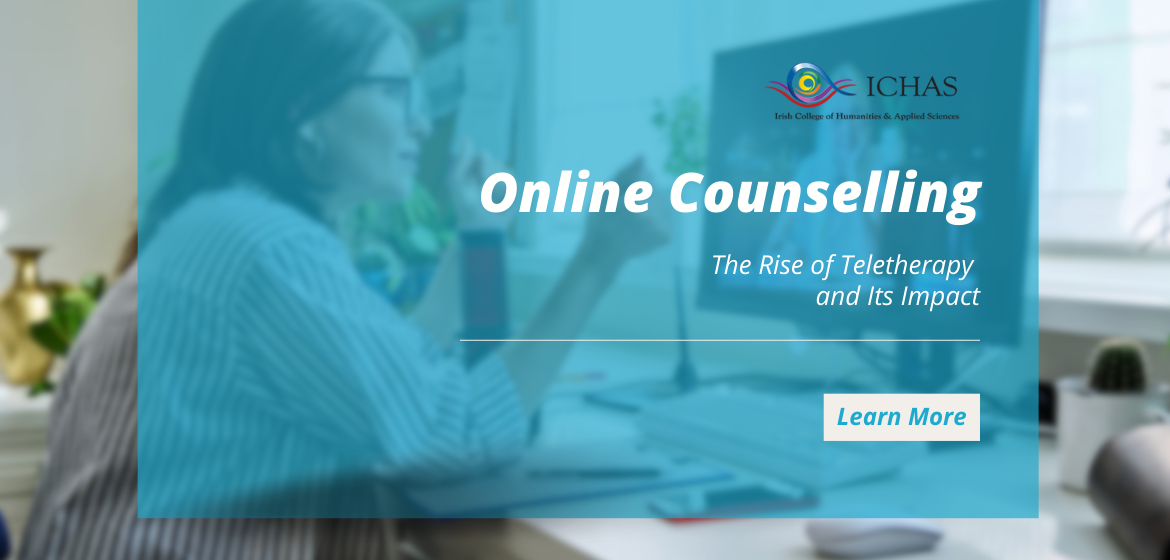
Online Counselling: The Rise of Teletherapy and Its Impact
In recent years, digital and online counselling, often referred to as teletherapy, has seen a dramatic rise, especially in the wake of the COVID-19 pandemic. As technology continues to advance and the world becomes more connected, teletherapy has emerged as an accessible and flexible way to receive mental health support. This article explores the evolution of digital counselling, the factors driving its rise, its various formats, and the many benefits it offers to both therapists and clients.
The Evolution of Digital Counselling
Teletherapy is not an entirely new concept. The idea of offering remote psychological support dates back to the early 20th century, when the telephone was first used to deliver counselling services. However, digital counselling in its modern form began to take off in the late 1990s with the advent of the internet and the development of video conferencing technologies. The term “e-therapy” or “online therapy” initially referred to counselling via email or chat services, but it has since expanded to include real-time video consultations, text messaging, and even mobile apps specifically designed for mental health.
The growth of high-speed internet and the proliferation of smartphones have been crucial factors in teletherapy’s rise. These technological advancements have made it easier for individuals to access professional mental health support from the comfort of their homes. Today, online counselling includes a wide range of services, from one-on-one therapy sessions with licensed professionals to group therapy, workshops, and self-help tools all delivered digitally.
The Impact of COVID-19 on Teletherapy
The global COVID-19 pandemic was a major catalyst for the growth of teletherapy. During the pandemic, people faced increased mental health challenges, including anxiety, depression, isolation, and grief. At the same time, lockdowns and social distancing measures made traditional in-person therapy difficult or impossible to access. This led to an unprecedented surge in demand for online counselling services.
Many therapists and mental health organisations quickly adapted by moving their practices online, and teletherapy platforms saw rapid growth. Services such as BetterHelp, Talkspace, and others became household names as they provided a lifeline for those seeking emotional and psychological support during a time of heightened stress. Even after the worst of the pandemic subsided, the convenience and accessibility of teletherapy have solidified its place as a key component of modern mental health care.
Types of Online Counselling
Digital counselling services now come in various formats, allowing users to choose the method that best suits their needs and preferences. Some common types include:
- Video Counselling: One of the most popular forms of teletherapy, video counselling involves live, face-to-face sessions conducted via a secure video platform. This format closely mimics traditional in-person therapy, allowing for real-time interaction between the therapist and the client.
- Text-Based Therapy: This format allows clients to communicate with their therapists through text messages, chat platforms, or email. It is often asynchronous, meaning that clients can send messages at any time, and therapists respond within a given timeframe. This method offers flexibility, especially for those who find real-time communication challenging or prefer to process their thoughts through writing.
- Phone Therapy: For clients who may not have access to a reliable internet connection or who are uncomfortable with video sessions, phone therapy provides an alternative way to receive counselling. Like video therapy, phone sessions are typically scheduled and conducted in real time.
- Self-Guided Digital Tools: Some numerous apps and platforms offer self-help resources, guided meditation, cognitive behavioural therapy (CBT) exercises, and more. While these tools may not involve direct interaction with a therapist, they can be a helpful supplement to traditional therapy or serve as a standalone mental health resource.
The Benefits of Teletherapy
The rise of teletherapy has brought numerous benefits, both for clients and therapists. Below are some of the most significant advantages:
- Increased Accessibility – One of the most important benefits of teletherapy is its ability to increase access to mental health services. Many individuals, particularly those living in rural or underserved areas, may have limited access to in-person counselling services. Teletherapy eliminates geographical barriers, allowing people to connect with qualified mental health professionals regardless of their location. Teletherapy is also beneficial for individuals with disabilities, those who have mobility issues, or those who experience social anxiety that may prevent them from seeking help in traditional settings. With teletherapy, clients can engage in therapy from the comfort of their own homes, making the process less intimidating and more convenient.
- Convenience and Flexibility – Digital counselling offers unparalleled convenience and flexibility. Clients can schedule therapy sessions around their busy lives, with many platforms offering evening and weekend appointments. For those with hectic schedules, childcare responsibilities, or demanding jobs, the ability to access therapy without the need for travel can be a game-changer. The asynchronous nature of text-based therapy also allows clients to reach out for support whenever they need it, without being constrained by appointment times. This makes mental health support more responsive and adaptable to individual needs.
- Affordability – Online therapy services are often more affordable than traditional in-person therapy. Many teletherapy platforms offer subscription models, which provide a set number of sessions or unlimited messaging with a therapist for a flat monthly fee. This can be a more cost-effective option, especially for individuals without health insurance or those with limited coverage for mental health services. Additionally, teletherapy reduces costs related to travel, childcare, and time off work, making it a more financially viable option for many people.
- Reduced Stigma – The anonymity and privacy offered by teletherapy can help reduce the stigma that some people may associate with seeking mental health care. Clients who may feel uncomfortable visiting a therapist’s office or who are concerned about being seen seeking therapy may find digital counselling a more discreet option. Online therapy platforms also make mental health services more approachable for people who may have been hesitant to seek help in the past. With the option to engage in therapy through a phone or computer, it becomes easier for individuals to take the first step toward improving their mental health.
- Continuity of Care – Teletherapy provides an opportunity for continuity of care, especially for clients who may move to a new location or travel frequently. Rather than starting over with a new therapist, clients can maintain their therapeutic relationship through digital means, ensuring consistency and stability in their mental health care.
- Expanded Reach for Therapists – For therapists, teletherapy offers the ability to expand their practice beyond local clients. Therapists can reach clients in different cities, states, or even countries, providing them with greater flexibility in how they structure their practice. This expanded reach also allows therapists to work with clients who may share specific cultural or linguistic backgrounds, even if they are geographically distant.
- Customisation and Personalisation – Many digital counselling platforms allow clients to select therapists based on their specific needs, preferences, or backgrounds. Some platforms offer a wide range of filters, including therapist specialities (e.g., trauma, addiction, anxiety), language preferences, and therapy styles (e.g., CBT, psychodynamic). This level of personalisation can lead to a more tailored and effective therapeutic experience.
Challenges of Teletherapy
While teletherapy offers many benefits, it is not without its challenges. Some clients may find the lack of in-person connection to be a barrier to building a therapeutic relationship. Additionally, privacy concerns may arise, particularly if clients are in environments where they cannot speak freely, such as shared living spaces.
Technical issues, such as poor internet connections or unfamiliarity with technology, can also disrupt the therapy process. For therapists, adapting to online counselling may require additional training and adjustments in communication styles, especially when reading non-verbal cues becomes more difficult.
The Future of Teletherapy
As online counselling continues to evolve, it is likely that teletherapy will remain a permanent fixture in the mental health landscape. Hybrid models that combine in-person and digital sessions are also becoming increasingly popular, offering clients the best of both worlds. Additionally, advances in artificial intelligence (AI) and virtual reality (VR) may open up new possibilities for delivering mental health services in innovative ways.
Overall, the rise of teletherapy has democratised access to mental health care, making it more accessible, flexible, and personalised than ever before. While there are still challenges to overcome, the benefits of digital counselling are clear, and its continued growth is a promising sign for the future of mental health care.
Teletherapy represents a major shift in how mental health services are delivered. By breaking down geographical, financial, and psychological barriers, digital counselling has opened up new opportunities for individuals to access the support they need. With ongoing technological advancements and increasing recognition of the importance of mental health, teletherapy is likely to continue growing and playing a pivotal role in the future of mental health care.
If you want to learn more about online counselling and the options available check out our counselling and psychotherapy course page today.























